Want ripped, toned abs and obliques? Abs machines are a great way to challenge your core muscles and get faster results.
At the gym, abs machines make it easy to isolate your abs and hit them with different angles with targeted resistance. This is a more effective method than simply crunching on the floor.
Whether you are looking for a classic seated abs crunch machine or an innovative rotary torso machine, our expert tips will ensure you maximize every rep for optimal core strengthening.
Say goodbye to guesswork and take a well-informed, effective approach to abs training.
In this blog post, we’ll show you the best abs machine exercises for each abdominal muscle group and how to do each one correctly. We’ll also provide a sample workout routine and tips.

- The Anatomy Of Your Abs and Oblique
- Rectus Abdominis
- External And Internal Obliques
- Core
- 7 Best Gym Machines For Abs Workouts
- 1. Cable Machines For Abs
- 2. Captain’s Chair
- 3. Oblique Machine Twist
- 4. Pull Up Bar For Abs Workout
- 5. Incline Bench To Train Abs and Oblique
- 6. Abs Crunch Machine
- 7. Abs Wheel Roller
- Beginner Ab Workout on Machine Routine
- Beginner Machine Oblique Workout Plan
- Conclusion
The Anatomy Of Your Abs and Oblique
Your waist comprises two muscle groups: the rectus abdominis (known as your “six-pack” muscles) In the front and the obliques on each side.
To build the impressive six-pack abs, first we needed to understand the anatomy and functionality of the abs. It is helpful to perform the ab exercises on the gym machine to the best level.
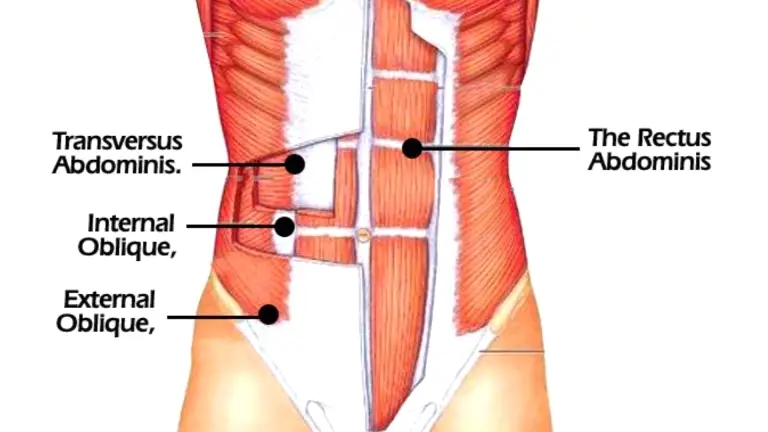
Rectus Abdominis
The rectus abdominis is a paired muscle running vertically down the front of the abdomen. It is commonly referred to as the “six-pack” muscle.
The two rectus abdominis muscles (one on each side) are encased in a sheath of fascia that forms the central dividing line down the middle of the abs.
External And Internal Obliques
The external and internal obliques are located on the sides of the abdomen.
- The external oblique is the outer visible layer that passes run diagonally on each side of the rectus abdominis.
- The internal oblique muscles lie under the external obliques and run into the lower back or erector spinae.
- The oblique muscles play a crucial role in torso rotation and lateral flexion, aiding in activities like twisting and bending sideways.
Core
The core comprises not only the abdominal muscles but also the muscles of the lower back, hips, and pelvis, working together to stabilize and support the spine.
The abdominal muscles work in synergy with other core muscles to provide stability, transfer force, and maintain proper posture.
Want to take your gains to the next level? Discover your daily calorie needs with our free TDEE calculator.
7 Best Gym Machines For Abs Workouts
Many gym-goers want strong, toned abs. While crunches and planks are effective bodyweight exercises, it is important to consider abs machine exercises when developing your core training regimen.
Machines help isolate muscle groups, improve form, and add resistance to challenge your abs better. Here are 7 gym machines that you can use for a complete abdominal workout.
1. Cable Machines For Abs
Cable machines are a popular type of gym equipment that can help you build your core and tone your abs. These machines have cables and pulleys that you can change to do different abs exercises in different directions.
Cable machines provide several benefits, including constant tension, versatility, and adjustability.
They help you work on specific muscles or muscle groups, balance out muscle imbalances, and improve your mind-muscle connection.
Cable machines are a safe way to exercise for people who are new to it or who have some experience.
Cable Machine Abs Exercises:
- Kneeling cable crunches – Primarily focuses on the rectus abdominis.
- Rotational side crunches – Twist obliques, pulley to the side
- Standing cable wood chop – Engages the obliques, rectus abdominis, and also works on rotational strength.
- Cable reverse crunches – Targets the lower abs and core stabilizers.
- Standing Cable Pallof Press: Excellent for core stabilization and works on the deeper core muscles
Know More: Most Effective Abs And Oblique Cable Machine Exercises
How To Do Cable Crunch
Cable crunches, also known as kneeling cable crunches, are a weighted Crunch variation that targets your ab and core muscles. Perform cable crunch at the gym by kneeling in front of a cable station with a pulley attachment.
Doing Abs crunches exercises on a cable apparatus at a gym offers one huge advantage over doing them on the floor.
The cable increases resistance, enabling you to train to failure using heavier weights and fewer reps—this increased emphasis on strength and hypertrophy.
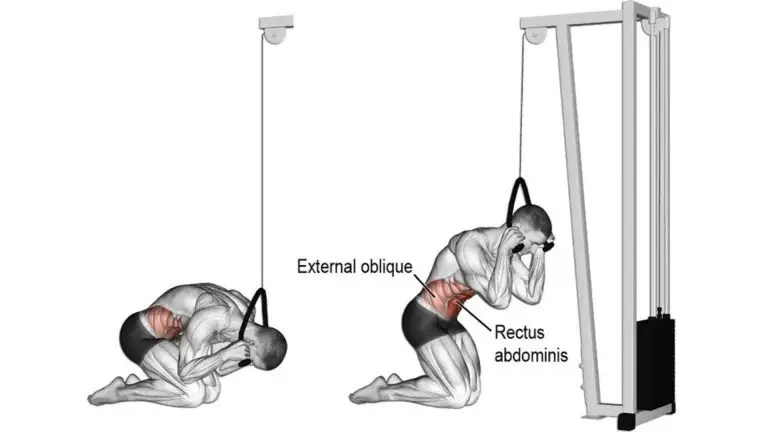
- Attach a rope to the top pulley of a cable machine. Kneel in front of the machine.
- Grip the rope handle above your head with both hands about shoulder-width apart.
- Sit up straight with a slight arch in your lower back. Keep your head aligned.
- Push your hips forward slightly to engage your core. Maintain this posture.
- Exhale and slowly crunch down. Keep your chest up and contract your abs.
- Focus on using your core to pull the rope down.
- Squeeze your abs hard at the bottom of the motion. Avoid pulling too far down.
- Inhale and slowly return to the start position in a controlled motion.
- Repeat for the desired number of reps.
- Focus on proper form rather than speed. Breathe steadily and keep your lower back straight.
- Start with lighter weight and progress by adding plates to increase resistance.
Know More Body Fat %: Use Our Free Body Fat Calculator
2. Captain’s Chair
The Captain’s Chair, also referred to as a vertical knee raise station, is commonly found in gyms. It has a tall frame with armrests and back support, so the user can hang freely.
Although the chair uses the same muscles as a hanging leg raise, it supports your back, which makes it more comfortable for most people.
After performing a small study, the American Council on Exercise named the standard Captain’s Chair crunch one of the most effective ab exercises for stimulating the abs and obliques.
Some of the exercises that can be performed on the Captain’s Chair include:
- Straight leg raises: Raise legs up together to 90 degrees.
- Bicycle crunches: Bring alternate knees to the chest
- Hanging knee raises: Bring bent knees to the chest.
- Oblique knee raises: Bring right knee to left elbow, twist obliques
- Flutter kicks: Rapid, small kicks replicating swimming
- L-sit holds: Hold the leg raised at 90 degrees.
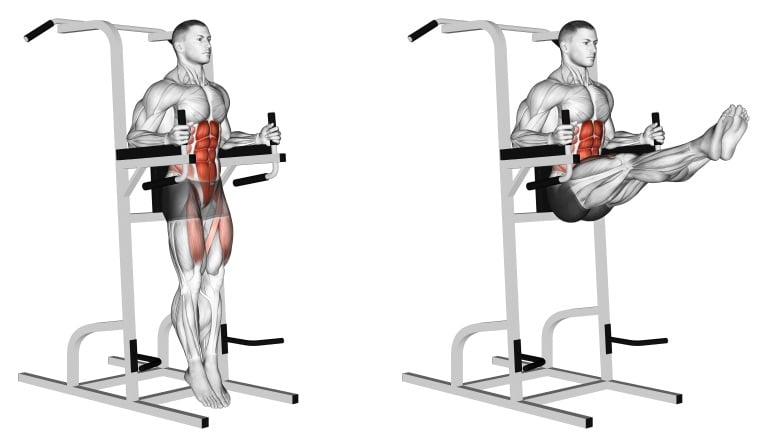
How To Do Captain’s Chair Straight Leg Raise
- Step into the Captain’s Chair apparatus. Position your back flat against the back pad, and place your forearms on the armrests.
- Allow your legs to hang straight down. Keep them straight and together.
- Engage your core muscles to stabilize your spine.
- With a controlled motion, lift your legs up in front of you.
- Aim to raise your legs until they are parallel to the floor, or as high as you can go without compromising your form or causing back strain. The higher you lift, the more intense the exercise.
- Once you reach the top of the movement, pause briefly.
- Then, slowly lower your legs back to the starting position.
- Controlled movement is key, so avoid letting your legs swing or drop suddenly.
- Exhale as you lift your legs, and inhale as you lower them.
- Aim for a set of 10–15 repetitions, or as many as you can do while maintaining good form.
- As you get stronger, you can increase the number of sets or reps.
3. Oblique Machine Twist
The Oblique Twist Machine, also known as the Rotary Torso Machine, that’s specifically designed to work on the oblique muscles on the sides of the abdomen.
It is a versatile piece of equipment that can help you achieve a stronger and more toned core.
These machines typically consist of a seat that the user sits on, and a cushioned handle in front that the user holds onto.
The machine lets you rotate your trunk against resistance. This effectively which targets the muscles of your core, including the obliques, quadratus lumborum, rectus abdominis, and transverse abdominis.
Ab exercises you can do with the oblique twist machine:
- Seated machine oblique twist
- Standing machine oblique twist

How To Do Standing Machine Oblique Twist
- Stand on a twist machine with feet hips apart and hold the machine handles.
- Assume a normal posture, with your back straight.
- Exhale and using your abdominal muscles twist the pelvis slowly to your right, as further as you can, tensing your abs.
- Hold the stretch for several seconds and return to your starting position while inhaling.
- Perform the stretch on the other side, this time turning to your left, as far as you can without moving your head and upper torso.
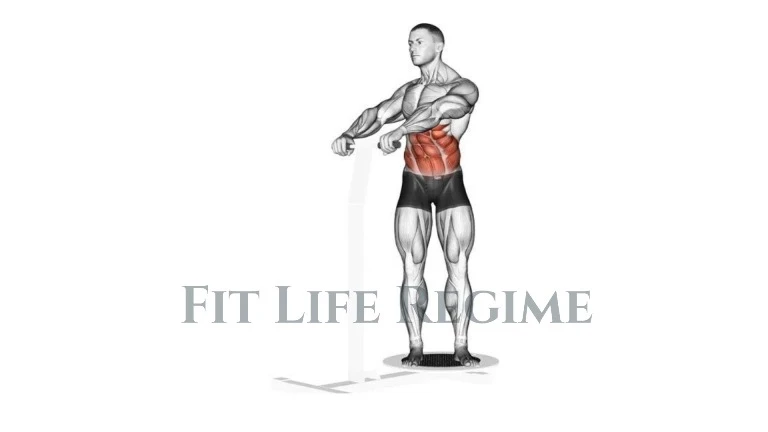
Know More: 21 Best Oblique Exercises For A Strong Core
4. Pull Up Bar For Abs Workout
A pull-up bar is a versatile piece of exercise equipment that can be used for various upper body exercises, including abs. It is usually mounted in a doorway or attached to a gym cable machine or power rack. It is simple to use and can be done at home.
Hanging leg raise is one of the most popular abs exercises that can be done on the pull-up bar. This exercise works your lower abs and hip flexors.
It enhances basic strength and hypertrophy of core muscles that assist in movements like squats, cleans and snatches, bracing, and more.
It is one of my favorite abdominal exercises that I used to train and build strong core muscles after a leg workout.
A 2014 study demonstrated that leg raises produce an impressive level of muscle activation, with over 130% maximum voluntary contraction (MVC) in the rectus abdominis (the “six-pack” muscles) and 88% MVC in the external obliques. These findings highlight the effectiveness of leg raises in targeting and strengthening the core muscles.
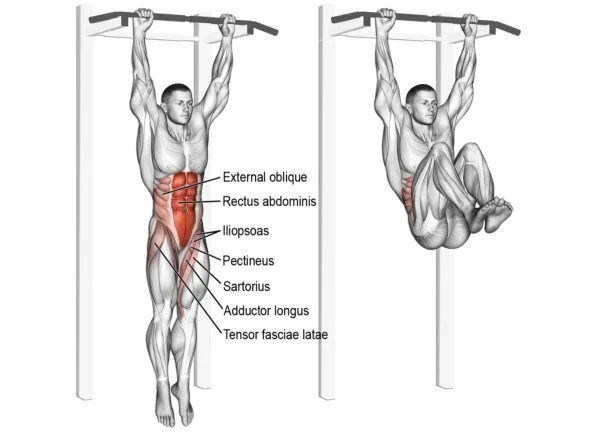
Here are some abs exercises that can be done with a pull-up bar:
- Hanging Knee Raises: Excellent starter exercise for beginners. Lift the knees towards the chest.
- Hanging Leg Raises: A more challenging variation of knee raises. Keep the legs straight while lifting them.
- Toes to Bar: For advanced users, toes to bar requires lifting your legs all the way up to touch the bar with your toes.
- Windshield Wipers: Rotating your raised legs from side to side in a windshield wiper motion. It’s an effective way to target the obliques.
- Hanging Scissor Kicks: Alternating each leg up and down in a scissor motion, this exercise engages the lower abs and hip flexors,
- Hanging Around the World: Involving circular leg movements. It’s great for hitting the abs from multiple angles.
- Hanging Oblique Raises: lift your knees towards your side. Effective to train the obliques.
How To Do Hanging Knee Raise
- Grab a bar with an overhead grip, with the hands slightly wider than shoulder-width and your knees slightly bent.
- Keep your core and glutes tight to keep your back and hips in the correct position.
- Lift your legs and bend your knees as you go up. This will make your knees closer to your chest. Also, round your lower back to move your glutes forward.
- Pause for a second and slowly lower your legs back to the starting position without swinging. Inhale as you go down.
- Continue for the desired reps.
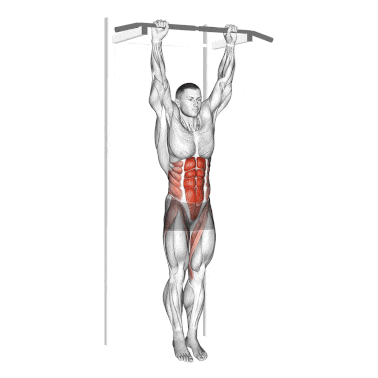
5. Incline Bench To Train Abs and Oblique
An incline bench is an exercise equipment that has an adjustable bench slanted at various angles. The inclination adds an additional level of difficulty to exercises compared to a flat bench.
The angle of the bench can be adjusted to increase or decrease the difficulty of the exercises.
One of the most popular exercises that can be performed on the incline bench is the incline bench sit-up. Here are some abs exercises that you can do with the incline bench.
- Incline Sit-Ups
- Incline Leg Raises
- Incline Reverse Crunches

How To Do Twisting Sit-Up
It is a challenging exercise for developing the upper abs. This position causes your body to work harder, since you have to work against gravity and through a wider range of motion.
It’s a great exercise for intermediate to advanced lifters because it is moderately challenging but very effective for its intended purpose.
- Sit on the decline bench, hook your feet under the pad, lean back, and position your hands behind your head.
- As you sit up, twist your torso, directing your right elbow toward your left knee.
- Reverse the motion and lower your torso back to the starting position.
- During the next repetition, direct your left elbow toward your right knee.
- Keep repeating and alternating the side to which you twist your waist.
6. Abs Crunch Machine
The crunch machine is an excellent way to strengthen your abdominal muscles by using a crunch machine. You can get great abs by adding this movement to your gym workout regime.
The machine typically consists of a seat, backrest, and handles or bars that the user pulls to perform the crunch motion.
It’s a good way to add resistance to your abdominal exercises for better abs and core development.
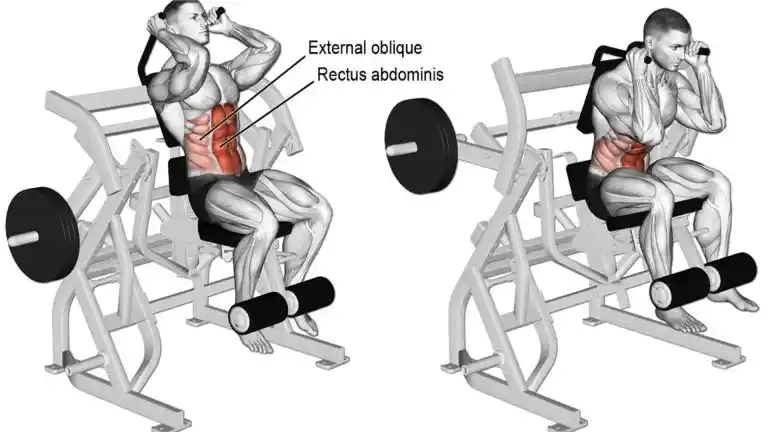
How To Do Machine Crunch
- Adjust the seat height so that when you sit down, the padded lever is positioned at shoulder level.
- Sit on the machine and rest your triceps on the pads provided.
- Your back should be against the backrest, and feet flat on the floor.
- Grip the handles beside your head.
- Use your core muscles and begin the exercise by curling your upper body towards your thighs.
- Pause and slowly return to the starting position as you inhale.
- Perform the desired number of repetitions, typically ranging between 10-15 for a standard set.
7. Abs Wheel Roller
If you want to get more creative with your abs machine workout, why not try an Abs wheel rollout?
The abs wheel roller is a simple but effective exercise tool that can help you strengthen your abdominal muscles. It is one of the more advanced exercises.
Other benefits of using an abs roller include improved core strength, hip flexor mobility, and shoulder stability.
To get yourself ready, you can start with the plank and work your way up to the wheel rollout when you’re ready. You can also make the exercise easier by performing it up an inclined surface.
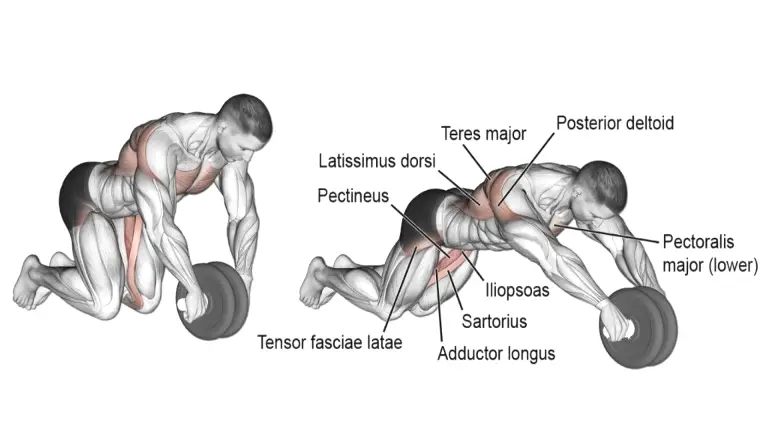
How To Do Abs Wheel Roller
- Kneel on the floor and grab the ab wheel roller with your hands.
- Your arms should be straight and your torso should be fairly upright.
- Allow the abs wheel to roll forward as far as possible with just your knees and toes touching the floor.
- The goal is to be as flat as possible in the finish position, with your torso and upper legs parallel with the floor.
- Then reverse the motion to pull the abs wheel back toward your knees until your body is upright again.
- Do as many reps as you can.
To Stay Motivated: 150+ Gym Workout Motivational Quotes To Stay Fit
Beginner Ab Workout on Machine Routine
If you’re new to lifting weights, don’t worry. This beginner-friendly abs workout routine is a great place to start.
| Exercise | Sets | Reps |
|---|---|---|
| Incline Sit-Ups | 4 | 8-10 |
| Cable crunches | 4 | 12-15 |
| Hanging knee raises | 3 | 6-8 |
Beginner Machine Oblique Workout Plan
| Exercise | Sets | Reps |
|---|---|---|
| Oblique Machine Twist | 4 | 10-12 |
| Oblique knee raises | 4 | 8-10 |
| Incline Twisting Sit-Up | 3 | 8-12 |
Conclusion
The gym is a good way to build stronger, more defined abs, improve core stability, and isolate the abdominals. The different machine types and movement variations allow you to target all areas of the core.
Some of the most popular gym machines for abs and oblique workouts include the captains chair, cable crunch station, and ab crunch machine.
The rotational torso machine and pull-up bar can be used to complete a full abdominal workout.
So the next time you’re at the gym, don’t forget these powerful tools for strengthening your abs.
References
- McGill S, Andersen J, Cannon J. Muscle activity and spine load during anterior chain whole body linkage exercises: the body saw, hanging leg raise and walkout from a push-up. J Sports Sci. 2014;33(4):419-26. doi:10.1080/02640414.2014.946437.
- Phys Ther. 2000 Jun;80(6):564-9. Abdominal muscle response during curl-ups on both stable and labile surfaces. Vera-Garcia FJ1, Grenier SG, McGill SM.
- Vispute SS, Smith JD, LeCheminant JD, Hurley KS. The effect of abdominal exercise on abdominal fat. J Strength Cond Res. 2011 Sep;25(9):2559-64. doi: 10.1519/JSC.0b013e3181fb4a46. PMID: 21804427.

Manish brings over 10 years of hands-on experience in weight lifting and fat loss to fitness coaching. He specializes in gym-based training and has a lot of knowledge about exercise, lifting technique, biomechanics, and more.
Through “Fit Life Regime,” he generously shares the insights he’s gained over a decade in the field. His goal is to equip others with the knowledge to start their own fitness journey.
